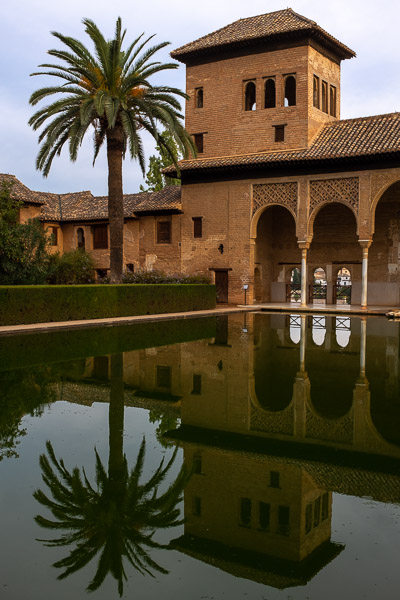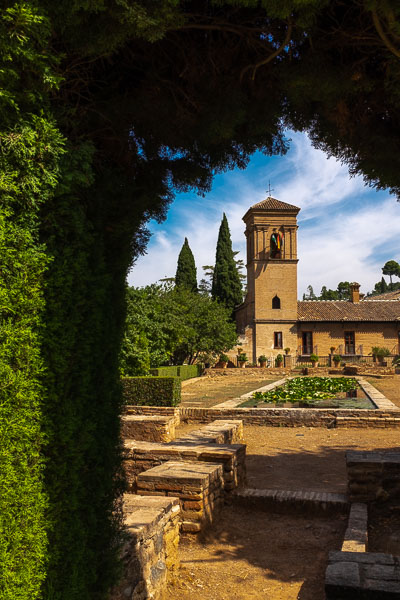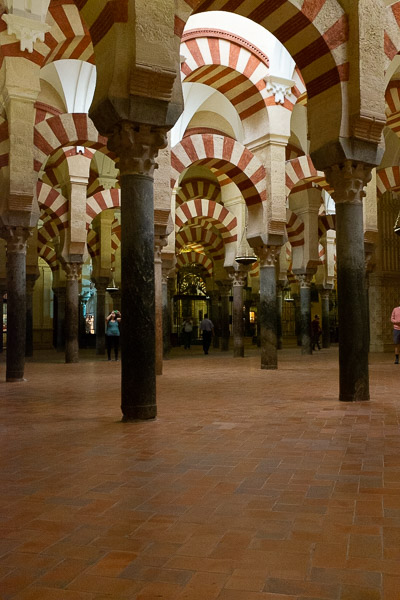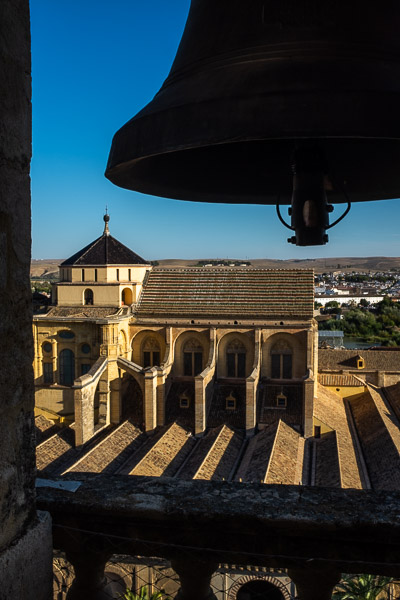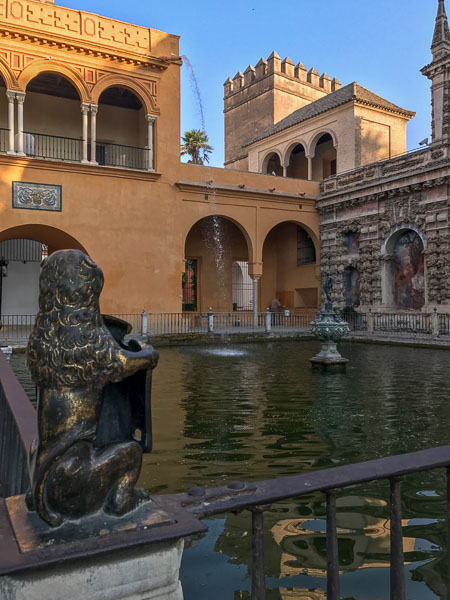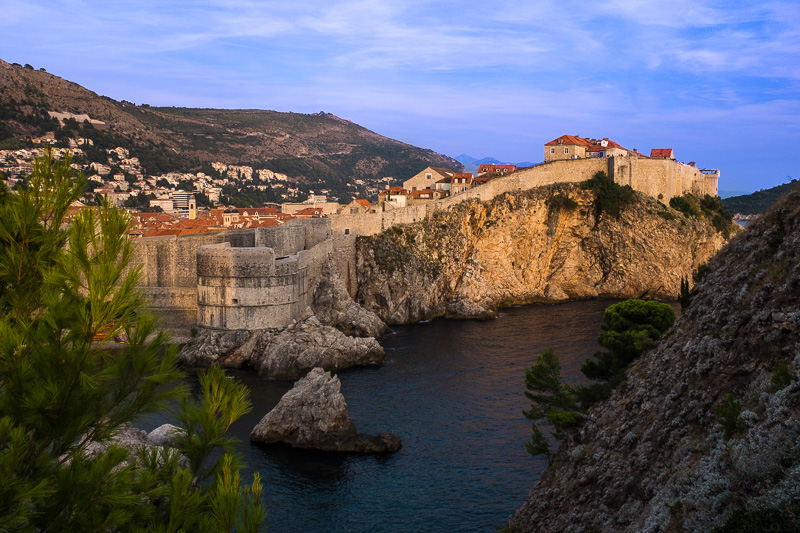Checking out: Granada, Còrdoba & Seville - the Spanish cultural city trifecta
Looking for three Spanish cities that will trump all others in terms of cultural richness? You cannot go too far wrong with Granada, Còrdoba, and Seville. Alhambra, La Mezquita, and Seville Cathedral max out on wow factor.
If you want to place a bet on three Spanish cities that will trump all others in terms of cultural richness and wow factor you cannot go too far wrong with Granada, Còrdoba and Seville.
The bonus for these three gems is their proximity to each other. Perfect for a long weekend whistle-stop tour.
The cities are a short bus ride away from each other in the most southern part of Spain’s Andalusia region. The region is rich in history and culture. The earliest known paintings of humanity were found in caves here. The proximity to North Africa sees a huge influence of Moorish style throughout the area.
Granada
Granada’s big draw is the opportunity to wander the magnificent 13th century Alhambra. One of UNESCO’s World Heritage darlings.
The sun sets on the historic Alhambra
We stayed at The Cathedral Rooms, just a short five minute wander from the centre of town and a stone's throw from the Catedral de Granada, surprise surprise. ‘The Rooms’ were certainly aimed at the more budget conscious, but still ridiculously expensive. The squeaky bunk beds a reminder of our time on the Camino de Santiago.
We spent our first afternoon meandering the Paseo de Los Tristes (The Promenade of the Sad Ones) which runs along the Darro River. A multitude of churches and museums battle for your attention.
We found refuge from the heat in Rincón del Chapiz, a small cafe tucked away on one of the many side streets. Dinner was in the Arab district, a warren of narrow streets bursting with little shops selling antiques, food, and an assortment of Moorish style fashion.
Following dinner, we made our way to Mirador San Nicolás to watch the sunset over Alhambra. The lookout awash with tourists, hawkers, and flamingo dancers. Great people watching but not a spot for a quiet romantic evening.
The following evening we soaked up the fantastic sunset at Mirador de San Cristóbal, a little quieter for romantic types.
Having done heaps of research, Julie had booked tickets to make sure we would be one of the first through Alhambra’s heavily fortified doors. This meant getting out of bed early, a 20-minute slog up the hill in the dark to the Justice Gate, and then chilling until the queue started to form.
Turned out we were the first into this incredible complex starting with Palacios Nazaries. Skipping through the first couple of rooms quite quickly we were able to relax, take in the history and grab some photos without anybody else around. The rooms and buildings and their intricate detailing are inspiring and breathtaking. Each room seems to outshine the last. When you’re away from the crowds, you really feel like you have travelled back in time.
The first fortress at Alhambra was built in the 1st century, then left abandoned for 1,100 years until the current complex first took shape. The Christian influence started around the end of the 15th century.
Just afterwards Christopher Columbus presented at Alhambra and got the ok from the King and Queen of Spain to set out on a little sailing trip.
Today Alhambra is a series of magnificent palaces, fortresses and gardens. A mish-mash of styles from across Europe and the Middle East. Make sure to pack your walking shoes though. There’s so much to take in.
The rugged no-nonsense fortress of Alcazaba is one of the oldest parts of the complex. First built around the 9th century.
The head-spinning circular courtyard at the Palacio de Carlos V was constructed on orders of Emperor Charles and paid for from taxes on the Moors. The original architect trained alongside Michelangelo in Italy.
The dazzling multi-coloured gardens of Generalife are a pleasure to mooch around. The palace and gardens built in the early years of the 14th century. Pebbles in the mosaics coming from both rivers that run through the city. White ones from the River Darro and black ones from the River Genil.
In total, cruising Alhambra’s palaces and grounds and walking to and from our accommodation, we clocked up over 14 kilometres and 138 floors.
Get in early before the crowds start to assemble, you won’t regret it. The Justice Gate is the only way to access Alhambra before the main gates open.
The biggest disappointment of our trip to Granada? Missing out on a pilgrimage to Plaza Joe Strummer. Who knew that there was a small square named after one of Steve’s all-time musical heroes.
Córdoba
Our next stop was considered to be one of the most advanced cities in the world, back in the 11th century. A three-hour bus ride saw us deposited in Córdoba.
Arriving in the town we missed our stop, so we had a very long and very slow loop of what seemed like the entire city. Let’s just say things were a little testy by the time we made it to our accomdation.
Beside the Roman Wall is a shared apartment, but we saw little of our fellow guests during our stay. And there was no false advertising in the name. We were a hop, skip and jump to the Roman wall and into the old part of the city.
La Mezquita, also known as the Great Mosque of Córdoba, dominates the old town. The first building was believed to have been built in 784. The original mosque became a cathedral during the early part of the 13th century.
Inside the imposing wall, the Orange Garden Courtyard leads to the stunning Cathedral/Grand Mosque, a mixture of Muslim and Christian architecture and styles. The main hall has over 856 columns of various materials including marble and onyx. A dazzling display of red and white archways open up to multiple chapels, with gold lined ceilings full of religious art and imagery.
The official opening hours start at 10.00am. But if you’re up early one of the large doors swings open at 8.00am for those who which to pray. This also means that anybody wishing to enter the Cathedral can do so and save the ticket price of €10 (US$12).
The former minaret, now a bell tower, is the perfect spot to get a bird’s eye view of the Cathedral and a beautiful place to watch the sunset. It’s just €2 (US$2.50) to climb the short walk to the top of the 54-metre tower, but you do need to book a time slot.
More Moorish history can be found at the Alcázar de Los Reyes Cristianos (Real Alcàzar). This castle was built in 1328. Once you have had your fill of the many towers and rooms, there are over 50,000 square metres of beautiful gardens to explore.
Stunning gardens of Alcázar de Los Reyes Cristianos
An excellent spot for an evening stroll and some sunset photography is the Roman Bridge spanning the Guadalquivir River. Initially built in the 1st century BC and later rebuilt by the Moors in the 8th century. Today after multiple rebuilds and additions the bridge has 16 arcades and runs for 247 metres.
Golden sunset Roman Bridge across Guadalquivir River
Seville
A view of Cathedral of Saint Mary of the See from Torre del Oro
Mark and Rohit on the Camino de Santiago
Our final Spanish stop was the gorgeous city of Seville. We checked into Pensión La Montoreña and ended up with a room opposite our Kiwi buddies Rohit and Mark. These guys had just completed the Camino de Santiago. Seville was the perfect place to catch up for few days, have several glasses of vino tinto, and swap Camino stories.
Our accommodation was a short walk through winding narrow streets to the imposing Catedral de Santa Maria de la Sede (Cathedral of Saint Mary of the See), the world’s largest cathedral. Also the final resting place of Christopher Columbus. This Cathedral is vast, you almost need GPS to navigate your way around. Even large tour groups fade to nothing inside the 23,500 square metre nave.
The 105-metre bell tower is unique in that there are no steps leading up the tower, just a gentle incline that spirals around the tower. When we visited much of the bell tower was cover in tarpaulin and undergoing renovation meaning that only one side was open. Even still we had a spectacular view of a slice of the city.
Bird's eye view of Seville from catherdral bell tower
The queue for the Cathedral snakes around the building shortly after opening. But there’s a way to jump the queue. Make a quick visit to Iglesia del Salvador (Church of the Savoir) at the Plaza Salvador and buy a combo ticket. This gets you access to the Church and the Cathedral.
This wee tip can save you an hour of queuing in the Seville heat. When you get to the Cathedral go right to the turnstile at the front of the line and show your receipt.
Boom you’re in.
A wander down the promenade alongside the Guadalquivir River leads you to the Torre del Oro. Built in the 13th century this dodecagonal watch tower used to be one anchor point for a massive chain that would be used to block the river from invading forces.
For a modern slice of Seville architecture head over to the whimsical Metropol Parasol. Built-in 2005 and reported to be the world’s largest wooden structure. To me, this piece of modern art looks like a low lying cloud. You can get access to the viewing platform for just €3 (US$3.50).
Just off the Metropol Parasol, there are some neat side streets with trendy bars and second-hand shops. Great people watching opportunities.
Sunset across Seville from Metropol Parasol
The Plaza Espana is a homage to all things Spanish. A huge semi-circled plaza with looming towers at the north and south sides. The thing to do here is to wander the tiled alcoves taking photos of the regions of Spain that you have visited. A great place to hang out and chill for a couple of hours.
The sweeping Plaza Espana
Our final piece of Moorish history during our trifecta city trip was the Alcázar of Seville. The oldest Royal Palace still in use in Europe. Well, the upper floors are still used. We choose to skip the Royal apartments and focus on the older ground floor rooms, courtyards and gardens.
Walking through the Gate of the Lion you can fully understand why this complex was used for part of the filming of Lawrence of Arabia. Steve’s second favourite movie of all time, by the way.
We ambled through the cutely named, Courtyard of Dolls, Gothic Palace, Admiral’s Room, Ambassador’s Room, and Bedroom of the Moorish Kings. Before losing ourselves in the peace and quiet of the gardens.
Tranquil gardens of Seville's Alcázar
Our tour of these culturally rich cities had come to a close. Three towns offering an excellent insight into the mixture of Moorish & Christian history. Each has its unique quirks, architecture, food, and cultural diversity. Each could be a holiday destination in its own right. Mix the three together, and you have an incredible Spanish cultural experience.
So which is your favourite?
Unlike picking a trifecta, we think picking one city over another would be unfair. Our recommendation would be to take at least 10 days and visit all three. Soaking up the amazing blend of architecture and culture from this part of Spain.
CHECK OUT: HINTS AND INFO
We travelled; (price per person)
- from Barcelona to Granada with Vueling NZ$115 (US$78)
- Taxi to Barcelona airport from central plaza NZ$57 (US$38.50) huge queue for the bus even at 6.30am so jumped in a cab
- from Granada to Córdoba with ALSA Bus for NZ$25 (US$17.50)
- from Còrdoba to Seville with ALSA Bus for NZ$21 (US$14.50)
We stayed at; (price per couple)
- Granada, The Cathedral Rooms, very basic bunk bedroom NZ$82 (US$55)
- Còrdoba, Beside the Roman Wall, large double room in shared apartment NZ$41 (US$28), yes half the cost of Granada.
- Seville, Pensión La Montoreña, great location, super clean double room and with roof terrace NZ$57 (US$39)
We visited; (price per person)
- Granada, Alhambra NZ$26 (US$17.50)
- Còrdoba, La Mezquita NZ$17 (US$12) free if you visit between 8am-10am
- Còrdoba, Alcázar de Los Reyes Cristianos NZ$7 (US$5)
- Còrdoba, Bell Tower NZ$3.50 (US$2.30) need to book at desk at the bottom of the tower
- Seville, Church of the Saviour & Seville Cathedral NZ$15.50 (US$10.50)
- Seville, Cathedral Tower NZ$3.50 (US$2.30)
- Seville, Metropol Parasol NZ$5 (US$3.50)
- Seville, Real Alcàzar NZ$18 (US$12)
- Seville, Torre del Oro NZ$5 (US$3.50)
We ate at; (price for two)
- Granada, Alaguarda NZ$36 (US$24) OK, nothing to shout about
- Granada, La Vinoteca NZ$48 (US$32), great wine.
- Còrdoba, Casa Rubio NZ$71 (US$48), great roof terrace but grumpy waiter. Amazing fried aubergines with honey
- Còrdoba, Amaltea NZ$50 (US$34) good restaurant, lots of veggie options
- Seville, La Bartola NZ$65 (US$44) bit of a queue but worth the wait
- Seville, Los Coloniales NZ$36 (US$24), great atmosphere very busy
- Seville, Salt and Sugar Cafe, amazing pastries and churros














